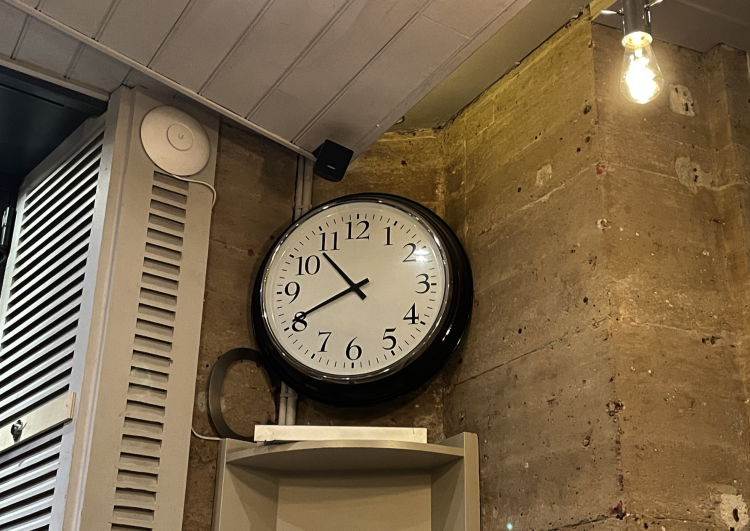Spring Forward, Fall Back

“Why is there suddenly no light when we get out of class?” “Wow, winter is really approaching.” “Was it always this dark outside at this time?” These are just some common examples of what may have been overheard over these past few weeks at AUP, and any other university, office, house or school in countries that use daylight savings time (DST), after we all traveled one hour back in time on the 29th of October.
In most Western countries, there are two days in the calendar in which the time is altered. Most people only think of this phenomenon when those two dates come around, the last Sunday of March and October, but it is a decision that drastically impacts, in the short term, our daily lives. Approaching the warmer months, days suddenly appear to become longer, as the sun shines for more time each day and the clock moves further an hour to create the impression of a longer evening. Vice versa, when we get closer to winter, the sun shines for shorter periods of time each day, and daylight is moved towards the morning as the clock moves an hour back. Although this may seem like a completely arbitrary decision, it was implemented due to a series of historical and economical reasons, which may now be deemed obsolete.
The origins of DST can be traced back to Benjamin Franklin's proposition in his 1784 essay, "An Economical Project”, a satirical piece that argued for the alignment of waking hours and daylight hours in order to save money on candles. However, its modern form was first legally and widely introduced in 1916 during World War I, when Germany and Austria implemented it to save resources in factories and arms manufacturers. However, after the war, it was considered unnecessary and therefore was abolished. It took its current form after the 1970s energy and oil crisis, when saving energy and money became a priority again, according to Worlddata. Nowadays, it is mainly used only in Europe, the US and Canada, and some other countries across the world such as Egypt, Chile, Paraguay, New Zealand and parts of Australia.
Getting out of class at noon in the fall can feel like the late afternoon after the change in time. (Image credit: Pablo Monfort Millán)The idea behind this temporal adjustment is to make more efficient use of natural daylight, thereby reducing the need for artificial lighting during the extended evening hours. Basically, if there was no use of DST, in a given place people would continue to use electric lighting until, say, 8 PM. However, with the implementation of daylight saving time, natural light could extend until 9 PM. Changing the time would imply reduced energy usage during that additional hour. In France, what is known as Central European Summer Time (CEST) is governed by national legislation that aligns with the European Union directive on the issue, according to Time And Date.
Modė Cirtautaitė, a Junior at AUP, doesn’t see it as a big issue, although it can potentially influence some groups of people, “Since it is not relevant to my vie quotidienne, I do not see it as advantageous or disadvantageous, but I do see how it could have negative impacts on people with seasonal depression”.
Annika Lovgren, an AUP senior, said, “It has been interesting to learn how daylight savings is unique to my environment, and affects my daily movements, whereas other people in the world are not impacted by it”. “It would be weird not to experience every single year, but at the same time, the world still goes around the sun in 365 days, and so I would experience seasons the same way wether or not daylight savings happens”.
Leonor Feigenblatt, who grew up in Panama, a country with no implementation of DST, said, “Although we never used it in Panama, I wouldn’t say it affects me a lot in Paris either, it's only the first couple of days it's kind of strange to get used to it. It does make the time difference between Paris and Panama one hour shorter!”
No doubt, there are substantial arguments in favor of daylight saving time, and there was a historical reason to implement it. These range from energy conservation, which directly leads to less pollution, to economic benefits derived from the improved efficiency of processes and reduced dependency on artificial light. However, there is disagreement regarding its true potential for energy savings. Opponents often point to the inconclusive evidence surrounding its effectiveness, and the potential disruption of personal short-term wellbeing.
It is not only about getting that one extra hour of siesta or fiesta. DST is a Western phenomenon that is stuck with us for better or worse. It is only an hour change every six months, but can still influence everything from mood to working conditions. How we manage time is a construct that we have agreed upon, so will we keep the status quo or choose to defy it?








